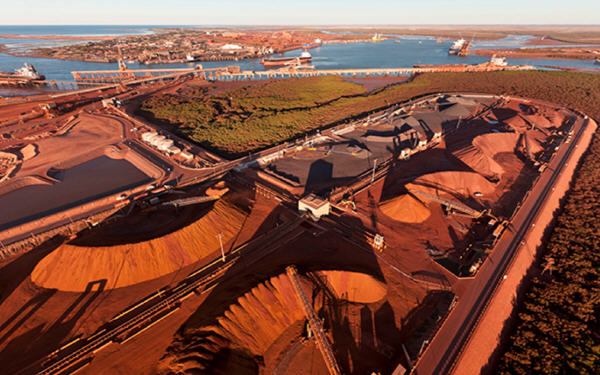
Iron ore prices look increasingly caught between the bullish reality of lower supply from Brazil and the bearish possibility of weaker demand if President Donald Trump carries out his threat to ramp up his tariff war against China.
The price action in the wake of Trump’s Twitter threat on Sunday to ramp up tariffs on $200 billion of imports from China to 25% was indicative of iron ore’s dilemma.
Iron ore futures on the Dalian Commodity Exchange, the most liquid market for the steel-making ingredient, dropped in early trade as investors fretted that the trade talks between the United States and China had been effectively derailed.
They slid as much as 1.9 percent to an intraday low of 622.5 yuan ($91.95) a tonne, but then spent much of the rest of the trading day recovering ground to end only slightly weaker at 633.5 yuan, down just 1 yuan from the previous close.
The turnaround was likely because investors started to focus on another issue for iron ore – the loss of cargoes from Brazil, the world’s number two exporter behind Australia.
Brazil shipped 18.34 million tonnes of iron ore in April, down 17 percent from the prior month and a massive 29 percent from the same month a year earlier, according to official trade data.
Brazil’s top miner, Vale, has been hit by a series of mine closures for safety reasons after a tailings dam burst at one of its mines in late January, killing more than 300 people and shattering confidence in the miner’s safety record.
In the first four months of 2019, Brazilian exports were 97.2 million tonnes, down from 111.9 million in the same period in 2018, according to vessel-tracking and port data compiled by Refinitiv.
It also hasn’t been plain sailing for Australia. Exports were disrupted by a tropical cyclone that struck the main mining and export harbours in Western Australia state in late March.
Australian exports in the first four months were 259 million tonnes, down from 280 million for the same period a year earlier, hurt mainly by a 13.3 million tonne drop in March.
Taken together, the drop from the world’s top two shippers of iron ore in the first four months of 2019 is 35.7 million tonnes, a significant hit to global supply.
The loss of supply is also showing up in Chinese imports, with Refinitiv estimating seaborne arrivals at 68.6 million tonnes in April, down from 88.5 million in March and the lowest monthly total since December 2016.
Port inventories in China have also been dropping rapidly, falling to 133.6 million tonnes in the week to May 5, down from a recent peak of 162 million in June last year and the lowest since October 2016.
The picture that emerges is one where the loss of supply is real, and justifies the increase in price witnessed for far this year.
Benchmark 62-percent iron ore for delivery to China, as assessed by Argus Media, ended at $94.05 a tonne on Monday, up 29 percent since the end of last year.
However, it was down 0.8 percent from the previous close, showing that worries over the U.S.-China trade dispute were enough to overcome the fairly dramatic loss of supply so far this year.
Iron ore, similar to many commodities where China is the largest buyer, will likely remain sensitive to the swings of the news cycle and the vagaries of Trump’s tweets as investors assess how much of an economic hit will be created by a heightening of the U.S.-China trade imbroglio.
But for the bears to overcome the bulls, the trade war fears will have to become reality, or the supply out of Brazil will have to be restored.
Source: Reuters